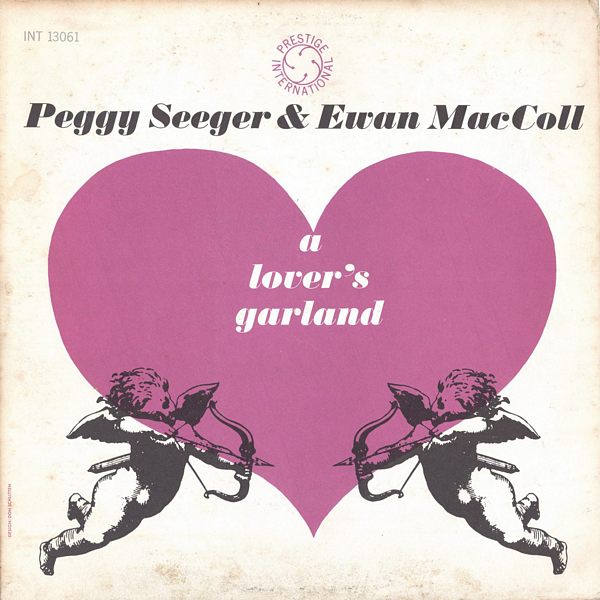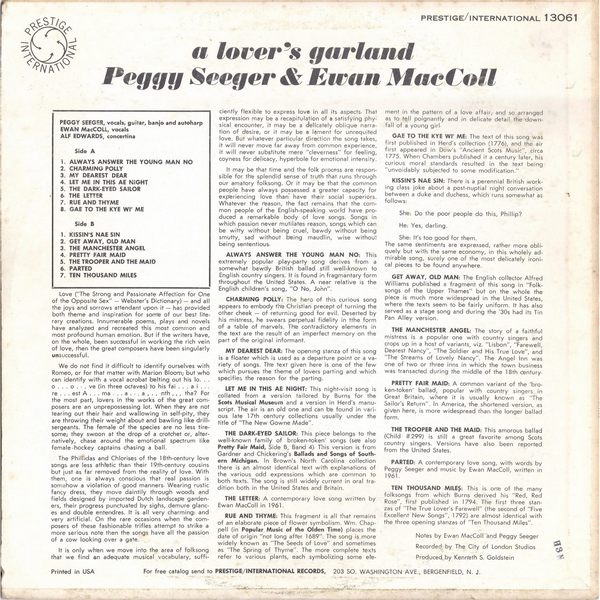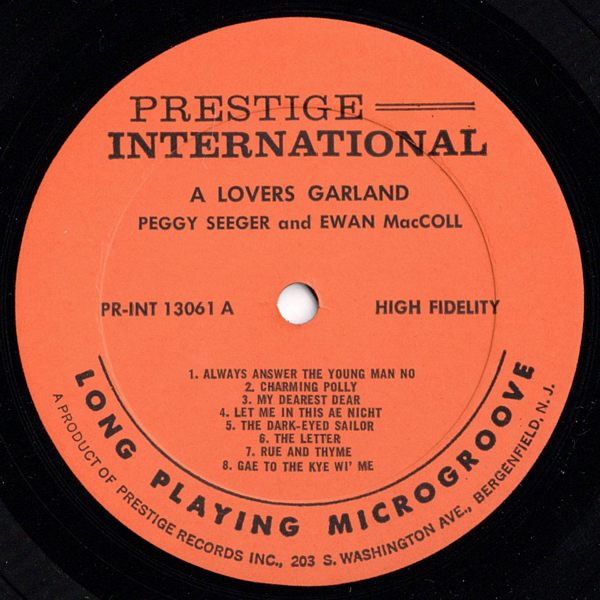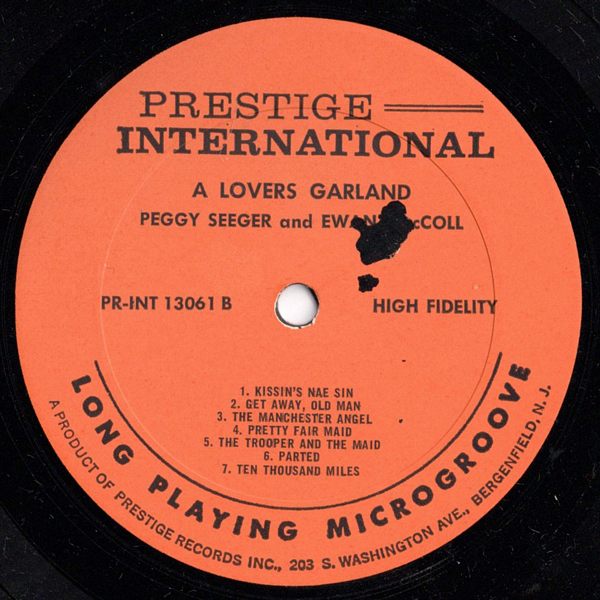

 |


 |
Sleeve Notes
Love ("The Strong and Passionate Affection for One of the Opposite Sex" — Webster's Dictionary) — and ail the joys and sorrows attendant upon it — has provided both theme and inspiration for some of our best literary creations. Innumerable poems, plays and novels have analyzed and recreated this most common and most profound human emotion. But if the writers have, on the whole, been successful in working the rich vein of love, then the great composers have been singularly unsuccessful.
We do not find it difficult to identify ourselves with Romeo, or for that matter with Marion Bloom; but who can identify with a vocal acrobat belting out his lo … o … o … ve (in three octaves) to his fai … a i … re … est A … ma … a … a … nth … tha? For the most part, lovers in the works of the great composers are an unprepossessing lot. When they are not tearing out their hair and wallowing in self-pity, they are throwing their weight about and bawling like drill-sergeants. The female of the species are no less tiresome; they swoon at the drop of a crotchet or, alternatively, chase around the emotional spectrum like female hockey captains chasing a ball.
The Phillidas and Chlorises of the 18th-century love songs are less athletic than their 19th-century cousins but just as far removed from the reality of love. With them, one is always conscious that real passion is somehow a violation of good manners. Wearing rustic fancy dress, they move daintily through woods and fields designed by imported Dutch landscape gardeners, their progress punctuated by sighs, demure glances and double entendres. It is all very charming: and very artificial. On the rare occasions when the composers of these fashionable trifles attempt to strike a more serious note then the songs have all the passion of a cow looking over a gate.
It is only when we move into the area of folksong that we find an adequate musical vocabulary, sufficiently flexible to express love in all its aspects- That expression may be a recapitulation of a satisfying physical encounter, it may be a delicately oblique narration of desire, or it may be a lament for unrequited love. But whatever particular direction the song takes, it will never move far away from common experience, it will never substitute mere "cleverness" for feeling, coyness for delicacy, hyperbole for emotional intensity.
It may be that time and the folk process are responsible for the splendid sense of truth that runs through our amatory folksong. Or it may be that the common people have always possessed a greater capacity for experiencing love than have their social superiors. Whatever the reason, the fact remains that the common people of the English-speaking world have produced a remarkable body of love songs. Songs in which passion never mutilates reason, songs which can be witty without being cruel, bawdy without being smutty, sad without being maudlin, wise without being sententious.
ALWAYS ANSWER THE YOUNG MAN NO: This extremely popular play-party song derives from a somewhat bawdy British ballad still well-known to English country singers. It is found in fragmentary form throughout the United States. A near relative is the English children's song, "O No, John".
CHARMING POLLY: The hero of this curious song appears to embody the Christian precept of turning the other cheek — of returning good for evil. Deserted by his mistress, he swears perpetual fidelity in the form of a table of marvels. The contradictory elements in the text are the result of an imperfect memory on the part of the original informant.
MY DEAREST DEAR: The opening stanza of this song is a floater which is used as a departure point or a variety of songs. The text given here is one of the few which pursues the theme of lovers parting and which specifies the reason for the parting.
LET ME IN THIS AE NIGHT: This night-visit song is collated from a version tailored by Burns for the Scots Musical Museum and a version in Herd's manuscript. The air is an old one and can be found in various late 17th century collections usually under the title of "The New Gowne Made".
THE DARK-EYED SAILOR: This piece belongs to the well-known family of broken-token' songs (see also Pretty Fair Maid, Side B, Band 4). This version is from Gardner and Chickering's Ballads and Songs of Southern Michigan. In Brown's North Carolina collection there is an almost identical text with explanations of the various odd expressions which are common to both texts. The song is still widely current in oral tradition both in the United States and Britain.
THE LETTER: A contemporary love song written by Ewan MacColl in 1961.
RUE AND THYME: This fragment is all that remains of an elaborate piece of flower symbolism. Wm. Chappell (in Popular Music of the Olden Time) places the date of origin "not long after 1689". The song is more widely known as "The Seeds of Love" and sometimes as "The Spring of Thyme". The more complete texts refer to various plants, each symbolizing some element in the pattern of a love affair, and so arranged as to tell poignantly and in delicate detail the downfall of a young girl.
GAE TO THE KYE WI' ME: The text of this song was first published in Herd's collection (1776), and the air first appeared in Dow's "Ancient Scots Music", circa 1775. When Chambers published it a century later, his curious moral standards resulted in the text being "unvoidably subjected to some modification."
KISSIN'S NAE SIN: There is a perennial British working-class joke about a post-nuptial night conversation between a duke and duchess, which runs somewhat as follows:
She: Do the poor people do this, Phillip?
He: Yes, darling.
She: It's too good for them.
The same sentiments are expressed, rather more obliquely but with the same economy, in this wholly admirable song, surely one of the most delicately ironical pieces to be found anywhere.
GET AWAY, OLD MAN: The English collector Alfred Williams published a fragment of this song in "Folksongs of the Upper Thames" but on the whole the piece is much more widespread in the United States, where the texts seem to be fairly uniform. It has also served as a stage song and during the '30s had its Tin Pan Alley version.
THE MANCHESTER ANGEL: The story of a faithful mistress is a popular one with country singers and crops up in a host of variants, viz. "Lisbon", "Farewell, Dearest Nancy", "The Soldier and His True Love", and "The Streams of Lovely Nancy". The Angel Inn was one of two or three inns in which the town business was transacted during the middle of the 18th century.
PRETTY FAIR MAID: A common variant of the 'broken-token' ballad, popular with country singers in Great Britain, where it is usually known as "The Sailor's Return". In America, the shortened version, as given here, is more widespread than the longer ballad form.
THE TROOPER AND THE MAID: This amorous ballad (Child #299) is still a great favorite among Scots country singers. Versions have also been reported from the United States.
PARTED: A contemporary love song, with words by Peggy Seeger and music by Ewan MacColl, written in 1961.
TEN THOUSAND MILES: This is one of the many folksongs from which Burns derived his "Red, Red Rose", first published in 1794. The first three stanzas of "The True Lover's Farewell" (the second of "Five Excellent New Songs", 1792) are almost identical with the three opening stanzas of "Ten Thousand Miles".